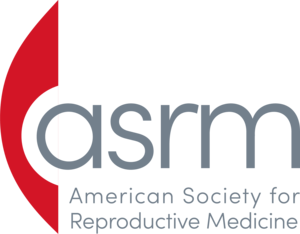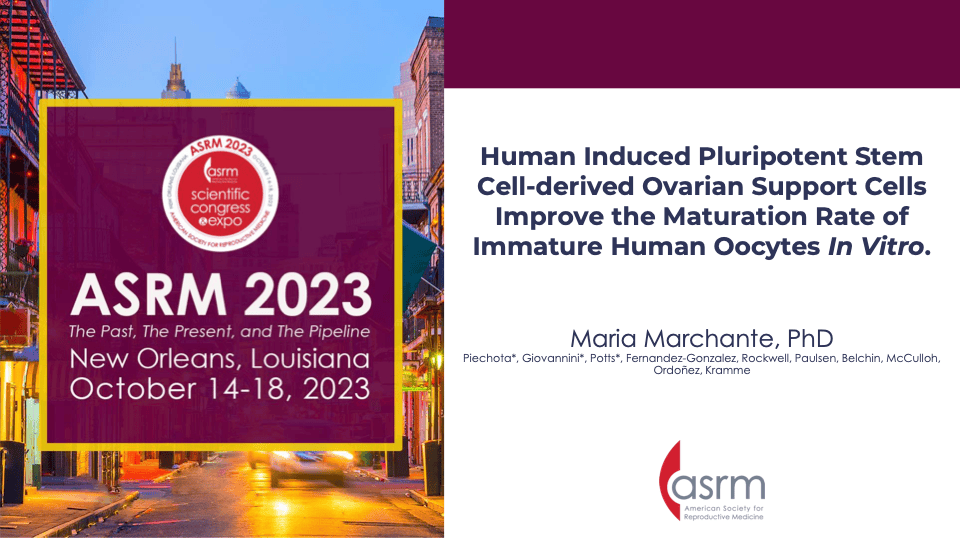Objective: A significant challenge in assisted reproduction is establishing successful protocols for in vitro oocyte maturation (IVM) for women who cannot or do not wish to undergo conventional controlled ovarian hyperstimulation. Despite the existence of supplemented media formulations to mature oocytes after abbreviated stimulation, IVM has been under-employed due to low success rates. We recently reported the development of human ovarian support cells (OSCs) generated from human induced pluripotent stem cells (hiPSCs) with ability to recapitulate dynamic ovarian function in vitro. Thus, we aimed to investigate using OSCs to improve human oocyte maturation in a co-culture system for IVM.
Materials & Methods: 46 subjects underwent minimal stimulation with 600 IU of rFSH followed by a trigger injection of 500 mg of hCG, with immature oocyte-cumulus complexes (COCs) collected 36 hours later. The donor oocytes were distributed in two experiments: Experiment 1 (n=25donors) aimed to determine whether the OSCs were the active ingredient of the IVM co-culture system, and Experiment 2 (n=21 donors) compared the efficacy of the OSC-IVM system versus the existing commercially available in vitro maturation system (Medicult IVM).
In Experiment 1, COCs were randomized between OCS-IVM (n=49) andControl-IVM (n=83). Media in both conditions were prepared following the Medicult manufacturer’s recommendations and supplemented with Androstenedione and Doxycycline. In Experiment 2, COCs were split into OSC-IVM (n=73) as above and Medicult-IVM (n=70) following only the manufacturer’s recommendations. After 24-28 hours of IVM culture, oocytes were denuded to evaluate the maturation rate and the oocyte quality was graded according to the Total Oocyte Score (TOS) system.
Results: In Experiment 1 the OSC-IVM group yielded an improved metaphase II (MII) maturation rate of 68% 6.83% SEM versus 46% 8.51% SEM in the IVM-Control (p = 0.02592, unpaired t-test), suggesting a functional activity of hiPSC-derived OSC in the co-culture system. We next evaluated the OSC-IVM co-culture as a viable system to mature human oocytes in a clinical setting (Experiment 2). Notably, OSC-IVM yielded 1.6x higher average MII formation rate with 68% 6.74% of mature oocytes across donors compared to 43% 7.90% in the commercially available Medicult-IVM (p = 0.0349, paired t-test).
In both experiments, the co-culture with hiPSC-derived OSC did not affect the oocyte quality as measured by TOS, indicating equivalent oocyte morphological characteristics between OSC-IVM and Control groups (Experiment 1 p=0.2909 and Experiment 2 p=0.9130, unpaired t-tests).
Conclusions: Mimicking the follicular environment in vitro by adding ovarian support cells to oocyte cultures significantly increased the MII formation rate without a detrimental effect on morphological quality, outperforming the commercially available IVM media.
Impact Statement: This study is the first report of significant improvement in the maturation rate of immature human oocytes in COCs co-cultured with iPSC-generated OSCs, representing a beneficial approach for oocyte IVM.

